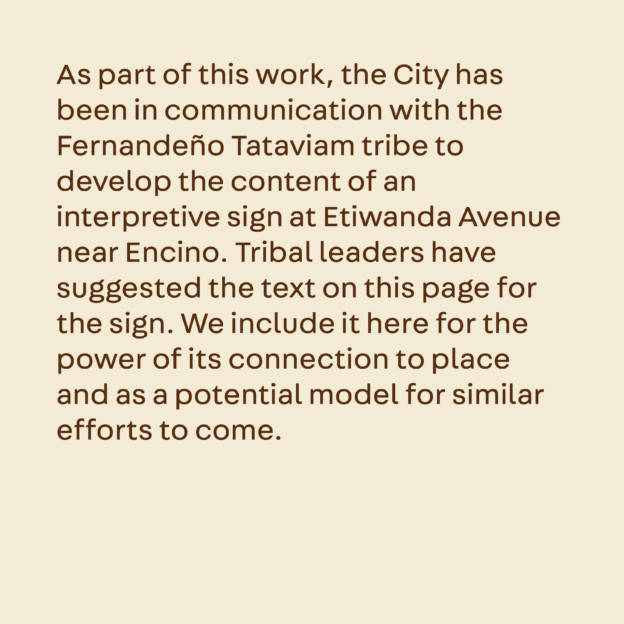In 2020, the National Park Service (NPS) granted the L.A. Department of City Planning funding to develop wayfinding signage along the Los Angeles River—an important capital improvement strategy identified in Los Angeles County’s 1996 L.A. River Master Plan and 2007 L.A. River Revitalization Master Plan. The L.A. River trail system within the City of Los Angeles boundaries coincides with the NPS-designated Juan Bautista de Anza National Historic Trail recreation route, which is named for the legendary explorer, military officer, and politician credited with helping to found Spanish California. Although some parks along the L.A. River feature Anza Trail markers, often missing from the trail’s narrative is the fact that Juan Bautista de Anza and the settlers he led intersected with Indigenous communities along their journey. The L.A. River wayfinding signage initiative provides an important opportunity to acknowledge the land’s history as well as the legacy and contributions of Indigenous communities along the river through place-based strategies and wayfinding.
In 2019, the L.A. City Planning Department coordinated with the Department of Transportation and Department of Recreation and Parks, as well as Mayor Eric Garcetti’s L.A. Riverworks Team and L.A. River Task Force, to begin placing wayfinding signs along the first phase of the Los Angeles Riverway Capital Improvement Strategy. The area near Griffith Park (mile markers 28 to 29 of the Anza Trail) is a pilot location; the wayfinding program will then identify more key wayfinding opportunities in the second-, third-, and fourth-phase geographical areas from Glendale west to Canoga Park in the San Fernando Valley and in the section along downtown Los Angeles. The wayfinding initiative will better link the L.A. River pathway to nearby community amenities, raise historical awareness of the river and the surrounding lands, and better reflect the cultural connections that they represent.
As part of this work, the City has been in communication with the Fernandeño Tataviam tribe to
develop the content of an interpretive sign at Etiwanda Avenue near Encino. Tribal leaders have suggested the following language for the sign. We include it here for the power of its connection to place and as a potential model for similar efforts to come.
Hamiinat (Hello)
You Are Now Entering Siutcanga
Siutcanga (Place of the Oaks) is a Native village now recognized as Encino, the name given by the Spanish settlers due to the presence of oak trees. The people of Siutcanga, known as Siutcavitam, are citzens of the Fernandeño Tataviam Band of Mission Indians.
This marker acknowledges that the Los Angeles River and its watershed are the traditional lands of the Fernandeño Tataviam, Gabrieleño Tongva, and Ventureño Chumash. We recognize that Indigenous Peoples have stewarded this land for thousands of years, many of whom still call it home today, and we give thanks for the opportunity to live, work, and learn on their traditional homeland. We recognize our responsibility to include these Tribal Nations in what we do for the river.
Paiko tan hiiv! (See you later) ●
